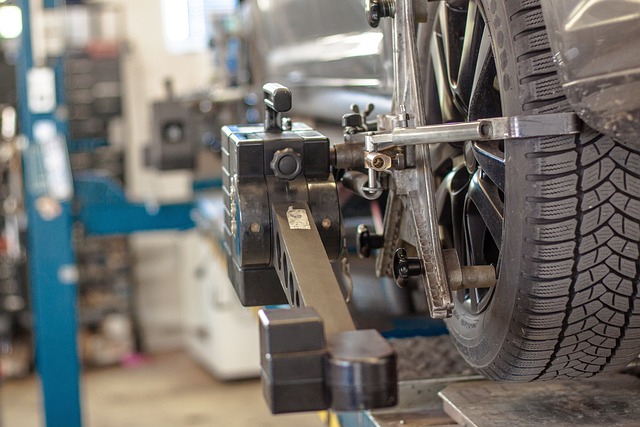Concrete cracks can range from minor aesthetic issues to serious structural concerns, with causes including settlement, moisture expansion, and construction failures. Different crack types indicate specific problems and require tailored repair methods, from epoxy injections for minor cracks to complex engineering solutions for severe cases. Addressing the root cause is crucial for long-term concrete durability.
Crack Repair involves a visual inspection (focusing on wider cracks), assessing crack length, depth, and patterns, and consulting professionals for complex cases. Common repair techniques include epoxy injection and carbon fiber reinforcement, with DIY options for minor cracks. Regular maintenance, including cleaning, sealing, and proper drainage, prevents new cracks. Proactive measures like suitable construction methods and protective coatings also mitigate cracking.
Concrete cracks can mar the aesthetics and structural integrity of residential properties. This comprehensive guide delves into the intricate world of crack repair, offering a detailed exploration of various solutions. From understanding the causes and types of concrete cracks to assessing damage and choosing between fix and seal methods, we provide an authoritative overview. Discover advanced technologies, DIY tips, maintenance strategies, and long-term prevention techniques for effective crack repair.
Understanding Concrete Cracks: Causes and Types

Concrete cracks can be both aesthetically undesirable and structurally concerning. Understanding their causes is the first step in addressing them effectively. The primary culprit behind concrete cracks is typically substrate settlement, moisture expansion, or structural failures due to poor initial construction. These issues manifest in various types of cracks, including hairline fractures, diagonal cracks, vertical cracks, and uneven joints. Hairline cracks are minute surface-level fissures often caused by drying shrinkage, while diagonal cracks suggest underlying structural problems like foundation movement. Vertical cracks, occurring along the length of a concrete surface, can result from earth pressure or differential settling. Uneven joints, if visible, point to improper construction techniques or material inadequacy.
Effective crack repair starts with identifying the specific type and cause. Professional assessment is crucial for determining whether the cracks are cosmetic or indicative of more severe structural damage. Once diagnosed, crack repair methods vary accordingly. Filling minor hairline cracks with epoxy injections offers a quick fix, preventing further growth. For wider diagonal or vertical cracks, structural engineering solutions might be necessary, involving reinforcement techniques to stabilize and strengthen the concrete. In all cases, addressing the root cause is vital to ensure long-term durability and prevent costly repairs down the line.
Assessing the Extent of Damage: Crack Evaluation

When assessing concrete cracks for crack repair, it’s crucial to evaluate their extent and type accurately. Visual inspection is often the first step; look for cracks that are wider than 1/8th inch (3 mm), as these typically indicate structural damage. Note the length and depth of the cracks, which can help determine their severity and potential cause.
Pay close attention to patterns—cracks that run parallel or diagonal suggest different issues compared to those that crisscross. Some cracks may be superficial, while others could signal more serious problems beneath the surface. Professional assessment is recommended for complex cases to ensure proper crack repair methods are employed.
Crack Repair Methods: An Overview

Concrete cracks can be both structural and aesthetic concerns, but various crack repair methods offer solutions for both. The first step in addressing concrete cracks is identifying their cause. Cracks can result from settlement, shrinkage, or movement due to environmental factors like temperature changes or moisture fluctuations. Once the cause is determined, appropriate repair techniques can be employed.
Common crack repair methods include epoxy injection, where a flexible polymer resin fills and strengthens the crack. This technique is effective for narrower cracks that do not compromise structural integrity. For wider structural cracks, carbon fiber sheets or mesh are often used as a reinforcement before filling with concrete or mortar. These methods provide both strength and stability, ensuring the crack does not re-open.
Non-Structural Crack Solutions: Fix vs. Seal

When it comes to residential concrete crack solutions, distinguishing between structural and non-structural cracks is crucial. Non-structural cracks, while not compromising the integrity of a building, can still pose aesthetic and potential water penetration issues. For these types of cracks, the decision between crack fix and crack seal depends on various factors.
Crack repair, or fixing, involves removing the damaged portion of concrete and replacing it with new concrete. This method is suitable for wider cracks that might be caused by settling or movement. On the other hand, crack sealing is a more surface-level solution where a protective coating is applied to fill and seal the crack, preventing water intrusion and further damage. It’s ideal for narrower cracks and can help extend the lifespan of concrete structures.
Structural Crack Repairs: When to Call a Professional

Structural cracks in concrete can range from minor aesthetic issues to significant structural problems. Knowing when to call a professional for crack repair is crucial. Small, shallow cracks that are only a few millimeters wide and do not affect the integrity of the structure can often be ignored or filled with an epoxy injection. These quick fixes can prevent further damage and maintain the surface appearance.
However, if you notice wider cracks, cracks that extend through multiple layers of concrete, or cracks that show signs of active movement, it’s time to involve a professional. Such extensive cracks can indicate structural instability and may compromise the safety of the building. A qualified contractor will assess the damage, determine the cause of the cracks, and suggest appropriate repair methods, ensuring long-lasting stability and structural integrity.
Advanced Technologies for Concrete Crack Healing

In today’s digital era, advanced technologies have revolutionized crack repair in residential concrete structures. Traditional methods are being supplemented by innovative solutions like polymer-based injections and carbon fiber reinforcement. These modern techniques not only heal existing cracks but also enhance the structural integrity of the concrete, ensuring longevity and stability for your home.
By employing these cutting-edge approaches, professionals can effectively prevent further crack propagation, offering a durable and cost-effective solution. The use of advanced materials such as epoxy resins and specialized fibers allows for precise filling and strengthening of cracks, restoring the overall strength and aesthetics of the concrete surface without extensive replacement or costly demolition.
DIY Crack Filling: Tools and Materials Required

DIY crack filling is a cost-effective way to address minor cracks in concrete surfaces around your home. Before beginning, gather the necessary tools and materials. A typical DIY crack repair kit includes a crack filler or epoxy, a putty knife for applying the material, and sometimes a wire brush to clean the crack’s surface. Ensure you choose a product designed specifically for concrete to achieve the best results.
The process involves preparing the cracked area by removing any loose debris and cleaning the surface with water and a mild detergent. Then, using the putty knife, force the crack filler into the fracture, filling it completely. After allowing it to cure according to the manufacturer’s instructions, you can smooth over any excess material with the knife for a clean finish. This method is suitable for small to medium-sized cracks and can significantly improve the aesthetics of your concrete surfaces.
Maintaining Concrete Surfaces to Prevent Cracks

Maintaining concrete surfaces is an effective way to prevent cracks from forming or worsening. Regular cleaning and sealing can protect against moisture penetration, a leading cause of concrete deterioration. Remove any debris, oil, or stains promptly using appropriate cleaning agents to ensure the surface remains intact. After cleaning, apply a high-quality sealer to create a protective barrier, making the concrete more resistant to cracks.
Additionally, proper drainage systems around your property are essential. Ensure water is directed away from foundations by installing adequate gutters and downspouts. This simple maintenance step can prevent excessive water pressure on concrete surfaces, reducing the risk of cracks developing over time. Regular inspection and timely crack repair are also vital; small cracks can be addressed with epoxy injections or filling compounds, preventing them from expanding and causing more extensive damage.
Long-Term Solutions: Crack Prevention Strategies

When it comes to long-term solutions for residential concrete crack issues, preventing cracks from occurring in the first place is key. Incorporating proper crack prevention strategies into your home’s maintenance routine can significantly extend the lifespan of your concrete structures. This involves several steps, including ensuring adequate drainage around the foundation to prevent water buildup, which is a primary cause of concrete cracking. Regular inspection and addressing any signs of cracks early on with crack repair techniques like sealing and filling can also deter the progression of existing cracks.
Additionally, using high-quality concrete mix and proper construction techniques during initial installation plays a crucial role in preventing future problems. Strengthening the soil beneath concrete structures and applying surface coatings or membranes can further safeguard against cracking. By adopting these proactive measures, homeowners can avoid costly and time-consuming crack repair treatments down the line.
